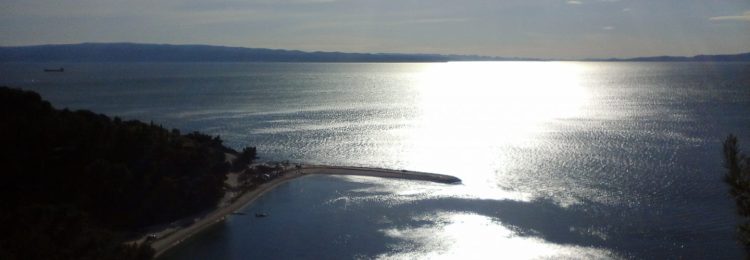
Diocletian’s Palace
Diocletian’s Palace is an ancient palace built by the Roman Emperor Diocletian at the beginning of the fourth century AD, that today forms about half the old town and city center of Split, in Croatia.
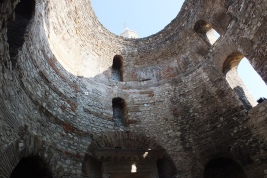
Vestibule
Vestibule is a part of the Diocletian’s Palace. It was used to enter the residential part of the palace. Southeast of the Vestibule is the mediaeval part of the city, with the oldest early Romanesque house from the tenth century. It leans on the very Vestibule. On the other side of the square, in the former church of St. Andrew built in the seventh century, in the place where the imperial chambers once were, the Ethnographic museum finds its place.
During the summer season, it is a place where klapas sing traditional Dalmatian a capella music:
https://www.youtube.com/watch?v=RAIXFiyRN1E.

The Cathedral of Saint Domnius
The Cathedral of Saint Domnius known locally as the Saint Dujam or colloquially Saint Duje (Sveti Duje), is the Catholic cathedral in Split, Croatia. The cathedral is dedicated to Virgin Mary and the belfry to Saint Dujam who is the patron of Split. Primarily it was the Mausoleum of the Roman Emperor Diocletian.
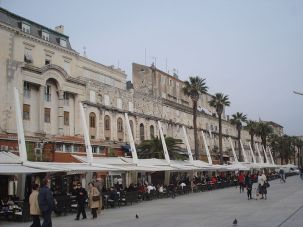
The Riva
The Riva is the cities living room, the most popular and most important public place in Split.

Voćni trg/Fruit Square
The official name of this square is Trg braće Radić/Square of the Radić brothers, but it is more familiar under its unofficial name Voćni trg/Fruit Square. Its “familiar” name comes from the fact that it was once home to the bustling and colourful market where women from the surrounding villages came to sell their fruit. On the neighbouring square, west of the Fruit Square, fruit was sold. At the square, there is the octagonal Venetian tower, the leftover of the former fortress, built in the 15th century for the defence of, at the time, a small town. Opposite the tower is a magnificent Palace of the old family Milesi from the 17th century. Just in front of it stands the monument to the father of the Croatian literature, the citizen of Split, Marko Marulić. The author of the monument, as well as the author of the Statue of Gregorius of Nin is Ivan Meštrović.
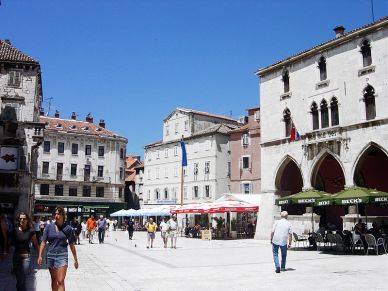
Pjaca/Narodni trg/People’s Square
Pjaca (People’s Square, another square nobody in Split calls by its real name), is first mentioned in 13th century as St Lawrence’s Square, and it was the first inhabited part of Split outside the Diocletian Palace, leaning to its western wall. he city clock has been ticking for centuries on Pjaca, unique by his 24 instead of 12 digits.

The Statue of Gregorious of Nin
The Statue of Gregorius of Nin. Gregorious of Nin was a medieval Croatian bishop of Nin who strongly opposed the official circles of the Church and introduced the national language in the religious services after the Great Assembly in 925.

Prokurative
Prokurative or as they are officially called, Republic Square resemble the Venice St. Marks Square. They are located west of the Riva and they were named after the arches found on the neo-Renaissance buildings surrounding the square on three sides.
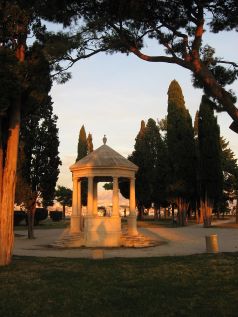
Sustipan
The southwest cape of the Split harbour is called Sustipan after a Middle Aged monastery of St. Stephen under the pine trees, which served as the resting ground to the Croatian Kings. At the beginning of the 19th century Sustipan became Split’s first cemetery. In the second half of 20th century, Sustipan is turned into a beautiful park. Nowdays, it is a popular place for wedding photos.
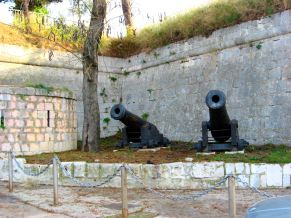
The Fortress of Gripe
The Fortress of Gripe is the complex built in 17th century as a fortification for defence against Ottoman Empire. During the Austro-Hungarian Empire it was used as the military base and during the Kingdom of Jugoslavia, as a prison, as well. Nowdays, there is the Sea Museum of Split, Archive of Split and Academy of Arts.
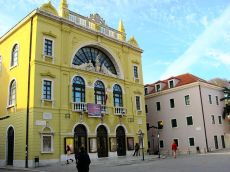
The Croatian National Theatre in Split
The theatre building was originally constructed as the Split Municipal Theatre in 1893 during the tenure of then mayor Gajo Bulat. The building was designed by local architects Emilio Vecchietti and Ante Bezić while the interior decoration was done by Eugenio Scomparini, Napoleone Cozzi and Josip Varvodić.

Marjan hill
Marjan hill is the hill above Split. It is covered in a dense Mediterranean pine forest and completely surrounded by the city and the sea, making it a unique sight. Originally used as a park by the citizens as early as the 3rd century, it is a favorite weekend excursion destination and a recreational center for the city.
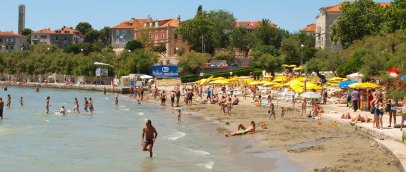
Bačvice beach
Bačvice beach is the most famous beach in Split. This sandy beach is a few minutes’ walk east of the ferry terminal. It is as a place where people from Split usually play picigin, a game only played in and around Split, which works rather like a netless version of volleyball in the sea, involving a lot of acrobatic leaping around as players try to prevent a small ball from hitting the water.
